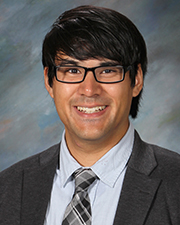The Jewish Synagogues and Christian churches in our cities are both houses of worship, but from two separate faith traditions. One tradition worships on Saturday, the other worships on Sunday.
Acknowledging some obvious, basic differences, I still used to feel that they functioned in much the same basic way. But that was before I began talking to archaeologists about synagogues in the first century, in the time of Jesus.

Jordan Ryan, a Wheaton College professor of New Testament, says the Gospel accounts provide information about early synagogues that is unknown from other sources. And while the beginnings of the synagogue are still pretty much shrouded in mystery, there are some hints in the Old Testament that might explain the origin of the synagogue.
In an interview on my Book & The Spade radio program in advance of this Saturday’s lecture at Upper House, Ryan said that various accounts in the Old Testament, as well as archaeology, indicate that city gates in the Iron Age had a square where people could gather. The town council met there, judicial decisions were made and carried out there. The king would sit in the city gate. “In Nehemiah,” he said, “the city gate becomes the place were the law is read publicly.”
Later on the design of the city gate changed. “What some scholars have proposed is that the shift in gate architecture led to the development of a building specifically meant to have all of those functions and things you would have done at a city gate in earlier times,” Ryaan said.
Intriguingly, the synagogue at Gamla in the Golan Heights, the largest of the eight first century synagogues that have been excavated and identified so far in Israel, is located right at the gate of Gamla.
One of the other first century synagogues that intrigues Ryan is at Magdala, on the northwest shore of the Sea of Galilee. It was discovered ten years ago, as a Catholic order prepared to build a retreat center. Ryan joined the excavation team in 2012.

The excavation at Magdala includes part of a floor mosaic. Several centuries later, beautiful floor mosaics were found in both churches and synagogues in the region. But the one at Magdala is the earliest.
Also in the Magdala synagogue, a small, beautifully carved stone bench or table was found, depicting, among other things, a menorah. “It’s a fascinating piece of artwork,” Ryan said. “We have no idea what exactly the stone was used for.”
Many scholars believe the stone depicts the Jerusalem temple in some way. In the first century, the temple was the center of Jewish worship, up until Jerusalem was destroyed by the Roman army in 70 A.D. The destruction of the temple changed Jewish worship in a major way, and also changed the role of the synagogue. But exactly how, is still being studied.
Jordan Ryan’s lecture, “The Synagogue in the New Testament: A New Frontier in Biblical Archeology,” is at 7:00pm, Saturday, October 19, 2019 (International Archaeology Day). Upper House is located at 365 East Campus Mall #200, on the University of Wisconsin Campus. The lecture is co-sponsored by the Madison Biblical Archaeology Society and InterVarsity. More information here.

